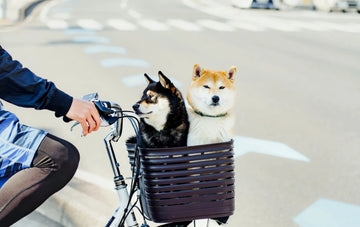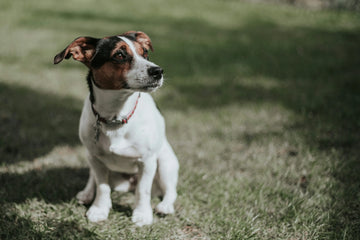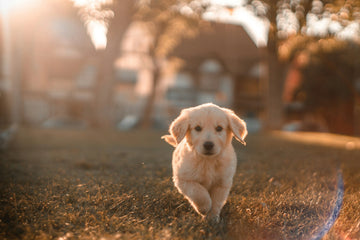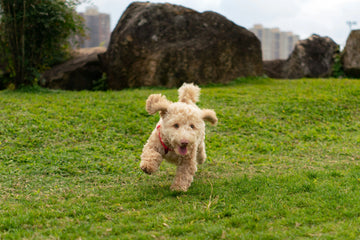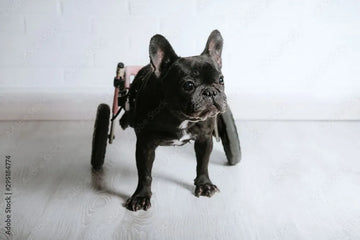Inside this Article:
In modern urban life, more and more dog owners want to enjoy the fun of cycling with their dogs. However, taking dogs on outings is not a simple task; it requires some preparation and skills. This article provides 5 practical tips to help you ride safely and happily while carrying a dog on a bike.

1. Choose the Right Dog Carrier for Bike
Before deciding to take your dog cycling, the first step is to choose the appropriate dog carrier for a bicycle. Depending on your dog's size and personality, you can choose from the following options:
- Front Dog Bike Carrier: Suitable for small and medium dogs. Choose a dedicated dog carrier for bike that allows your dog to have a clear view during the ride, reducing anxiety. Ensure the leash is secured to the handlebars to prevent the dog from jumping out.
Pawsbetter's dog bike carrier is specifically designed for carrying dogs, with a sturdy base to keep the dog stable. It has special straps to secure the basket to the bike and can also be used as a backpack or carried by hand, with a maximum weight capacity of 9 kg.
- Rear Basket or Small Trailer: Suitable for medium to large dogs. The rear basket needs to be securely installed and equipped with a mesh cover to ensure the dog’s safety. A small trailer is the most comfortable option, allowing the dog to move freely during the ride, though it is relatively more expensive.

Choosing the right carrying tool can greatly enhance the safety and comfort of your ride.
2. Prepare Your Dog Mentally and Help Them Adjust Before Riding
Before cycling, make sure your dog is accustomed to the bicycle and the carrying tools. You can help your dog get familiar with the environment through the following steps:
- Introduce the Bicycle and Carrying Tools: Bring your dog next to the bicycle to sniff and observe. Let your dog sit in the front basket or rear basket while gently pushing the bicycle, allowing them to get used to its sounds and movements.
- Train Calm Sitting: Before riding, help your dog get used to sitting calmly in the front or rear basket. You can practice this at home for short periods, ensuring your dog feels safe and comfortable.
- Gradual Adjustment: Start by riding at a slow speed to allow your dog to gradually adapt to the distance and speed differences. Over time, you can gradually increase the speed.
By following these steps, you can help your dog build confidence and reduce anxiety during the ride.

3. Safety on the Road Always Comes First
When cycling, ensuring your dog’s safety in the front or rear basket is the most important consideration. Here are some tips to ensure safety:
- Choose the Right Riding Route: Try to avoid busy roads and opt for parks or paths suitable for cycling. Ensure that your chosen route allows your dog to remain stable in the basket, avoiding sudden bumps.
- Be Aware of Surroundings: Always stay alert and watch for oncoming vehicles, children, and obstacles. Make sure the straps securing the front or rear basket are secure to prevent your dog from moving or jumping out during the ride.
- Control Speed: Initially, maintain a slow speed to help your dog adjust. As safety allows, you can gradually speed up, but always remain sensitive to the environment.
Road safety is paramount; ensuring the safety of you and your dog allows you to enjoy the ride.
4. Prepare Sufficient Food/Toys for Longer Distances
If you plan to ride for an extended period, be sure to prepare your dog’s food and water in advance. Here are some practical suggestions:
- Bring Dog Food and Treats: Carry some dog food and treats to replenish your dog's energy during breaks.
- Bring Water and a Bowl: Prepare a sealed water bottle to easily provide water for your dog. You can use the bottle cap as a bowl to ensure it stays hydrated during the ride.
- Bring Toys: Bring along your dog’s favorite toys, such as a tennis ball or frisbee, to interact with them during breaks and strengthen your bond.
Proper preparation ensures your dog remains happy and comfortable during the ride.
5. Sounding Bells and LED Collars Are Great Choices to Prevent Your Dog from Getting Lost
To ensure your dog's safety during the ride, it’s advisable to equip them with some safety gear:
- Loud Bell: Attach a loud bell to your dog’s collar so you can confirm their location by sound even when they are out of sight.
- LED Collar: When riding at night, equip your dog with an LED collar to increase their visibility and alert passing vehicles.
These small tools not only enhance your dog’s safety but also give you peace of mind while riding.
Overall, taking your dog on a bicycle trip is a fun activity, especially when using a puppy bike carrier, but it requires thorough preparation and attention to safety. By choosing the right dog carrier cycling options, preparing your dog mentally, ensuring road safety, preparing sufficient food and toys, and using safety gear, both you and your dog can enjoy a pleasant cycling experience. I hope every dog owner can ride alongside their dogs in beautiful scenery and enjoy the joys of life!

